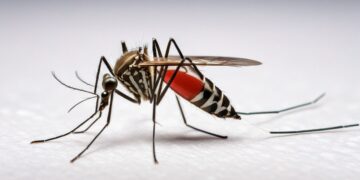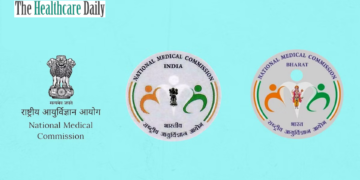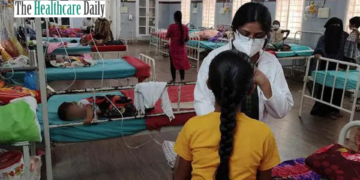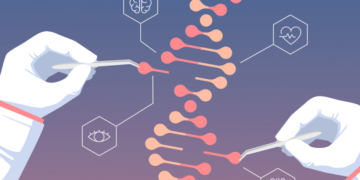Infertility in females, a frequent condition, is the inability to conceive and carry a healthy pregnancy. After a woman has tried to become pregnant (via unprotected intercourse) for 12 months without success, she is often labelled with this condition.
What do we mean when we say “infertility”?
The disorder known as infertility affects or limits one’s capacity to become pregnant and give birth to a child. After a year of attempting to get pregnant, this is typically diagnosed in heterosexual couples (a man and a woman) (but may be diagnosed sooner depending on other factors).
The list that follows does not aim to be comprehensive and simply includes some of the typical causes of female infertility. If a woman is experiencing trouble conceiving or carrying a pregnancy to term, she should consult her doctor about potential therapies.
Some possible causes for female infertility:
The majority of female infertility cases are caused by issues with egg production. Before menopause naturally occurs, the ovaries cease to function in primary ovarian insufficiency. The ovaries may not routinely release an egg or they may not release a healthy egg in people with polycystic ovarian syndrome (PCOS).
Infertility is a woman-related issue about one-third of the time. A third of the time, the issue is a man-related one. Sometimes there is no underlying cause.
1. Being incapable of ovulating
40% of women with infertility concerns experience failure to ovulation, which is the most typical overall cause of female infertility.1 There are a number of reasons why this happens, including:
gynaecological or ovarian disorders such polycystic ovary syndrome (PCOS) or primary ovarian insufficiency (POI) (PCOS).
Getting older, which includes having a “diminished ovarian reserve,” or fewer eggs in a woman’s ovaries as a result of natural ageing.
Endocrine disorders affect how much or how little of a hormone or group of hormones the body produces. Examples include thyroid disease and issues with the hypothalamus.
environmental and lifestyle influences.
2. An obstruction to your menstrual cycle
Infertility can result from issues with the menstrual cycle, which prepares the female body for conception. The menstrual cycle has multiple phases, and issues with any one of them might make it difficult or impossible to conceive.
3. A structural issue
The presence of aberrant tissue in the uterus or fallopian tubes is a common symptom of structural issues.
If the fallopian tubes are obstructed, sperm cannot reach the egg for fertilisation and eggs cannot travel from the ovaries to the uterus. Infertility can also result from uterine structural issues, such as those that could prevent implantation.
Infertility can result from a number of distinct structural issues, including:
Endometriosis is a condition in which tissue that ordinarily lines the uterus’ inside appears elsewhere, sometimes obstructing the fallopian tubes.
Although most women with fibroids do not experience fertility issues and are able to become pregnant, uterine fibroids are growths that occur inside and around the uterus’s wall. However, some women with fibroids may find it difficult to conceive naturally, experience multiple miscarriages, or give birth prematurely.
Polyps, which are benign growths on the uterus’ inside surface. Polyps can disrupt the uterus’ normal operation and make it challenging for a woman to carry a pregnancy to term. Surgery to remove the polyps may improve a woman’s chances of becoming pregnant.
Scarring in the uterus as a result of prior wounds, infections, or operations. Scarring can hinder implantation and increase the risk of miscarriage, which can result in infertility.
a uterus with an atypical form, which may interfere with implantation and the capacity to carry a pregnancy to term.

4. PCOS
One of the most frequent reasons for female infertility is PCOS. In this disorder, a woman’s ovaries and, occasionally, adrenal glands create more androgens (a type of hormone) than is typical. High concentrations of these hormones prevent ovarian follicle growth and egg release during ovulation. As a result, cysts—fluid-filled sacs—can form inside the ovaries.
According to research, between 5 and 10 percent of American women are thought to have PCOS.
Although the precise origin of PCOS is uncertain, recent research indicates that a confluence of hereditary and environmental factors may contribute to the condition.
5. Autoimmune conditions
Due to autoimmune diseases, the immune system of the body attacks healthy body tissues that it would typically disregard. Fertility may be impacted by autoimmune diseases such lupus, Hashimoto’s and other forms of thyroiditis, or rheumatoid arthritis.
The causes of this are not entirely understood and vary depending on the disease, although they are believed to involve uterine and placental inflammation or drugs used to treat the diseases. Both sexes have the ability to produce antibodies that target sperm or reproductive organs.
How is infertility in women treated?
There are numerous treatment options available when your doctor has identified the cause of female infertility and made the diagnosis. The form of treatment depends on the underlying cause of infertility. For instance, surgery may be used to correct structural difficulties, while hormone medicines may be used to treat other disorders (ovulation issues, thyroid conditions).
Many patients will need in vitro fertilisation or artificial insemination, which involves injecting cleaned sperm into the uterus after ovulation (fertilizing eggs with sperm in the lab to make embryos, then transferring the embryo into the uterus).
Women with infertility who want to have a family may also have options such as gestational surrogacy and adoption.
Can infertility in women be avoided?
The majority of female infertility issues cannot be anticipated or avoided. In some circumstances, it is possible to avoid infertility by reducing the risk factors that may contribute to it. For instance, adjusting one’s lifestyle to reduce alcohol intake and stop smoking, as well as to keep a healthy weight and form good exercise habits, may help one’s fertility. It’s crucial to routinely see your doctor and go over any additional female infertility risks you may have.
What are the chances of infertility in women?
The likelihood (prognosis) of female infertility varies significantly depending on the specific case and the underlying cause. The outlook is often optimistic when a structural anomaly (polyps or solitary fibroids) can be corrected surgically or when a medicine may be used to address an ovulatory issue. To find out more about your prognosis, discuss with your doctor your family history, risk factors, and underlying medical conditions.






















